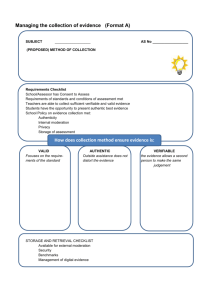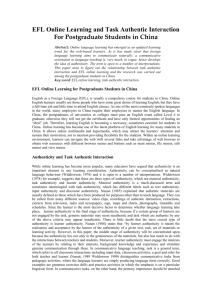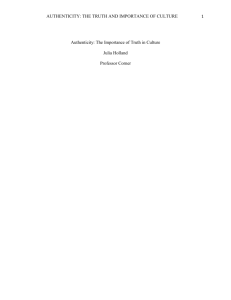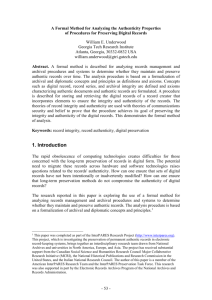Global Dexterity in the Classroom: International Student Teaching
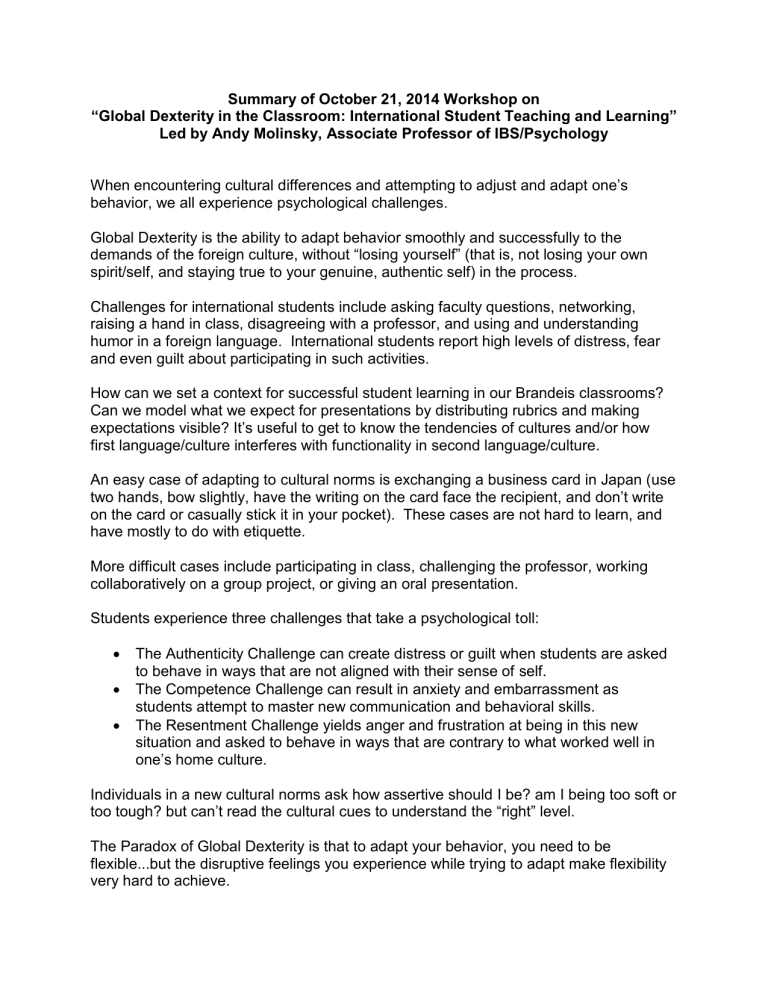
Summary of October 21, 2014 Workshop on
“Global Dexterity in the Classroom: International Student Teaching and Learning”
Led by Andy Molinsky, Associate Professor of IBS/Psychology
When encountering cultural differences and attempting to adjust and adapt one’s behavior, we all experience psychological challenges.
Global Dexterity is the ability to adapt behavior smoothly and successfully to the demands of the foreign culture, without “losing yourself” (that is, not losing your own spirit/self, and staying true to your genuine, authentic self) in the process.
Challenges for international students include asking faculty questions, networking, raising a hand in class, disagreeing with a professor, and using and understanding humor in a foreign language. International students report high levels of distress, fear and even guilt about participating in such activities.
How can we set a context for successful student learning in our Brandeis classrooms?
Can we model what we expect for presentations by distributing rubrics and making expectations visible? It ’s useful to get to know the tendencies of cultures and/or how first language/culture interferes with functionality in second language/culture.
An easy case of adapting to cultural norms is exchanging a business card in Japan (use two hands, bow slightly, have the writing on the card face the recipient, and don’t write on the card or casually stick it in your pocket). These cases are not hard to learn, and have mostly to do with etiquette.
More difficult cases include participating in class, challenging the professor, working collaboratively on a group project, or giving an oral presentation.
Students experience three challenges that take a psychological toll:
The Authenticity Challenge can create distress or guilt when students are asked to behave in ways that are not aligned with their sense of self.
The Competence Challenge can result in anxiety and embarrassment as students attempt to master new communication and behavioral skills.
The Resentment Challenge yields anger and frustration at being in this new situation and asked to behave in ways that are contrary to what worked well in one’s home culture.
Individuals in a new cultural norms ask how assertive should I be? am I being too soft or too tough? but can’t read the cultural cues to understand the “right” level.
The Paradox of Global Dexterity is that to adapt your behavior, you need to be flexible...but the disruptive feelings you experience while trying to adapt make flexibility very hard to achieve.
Faculty need to articulate the norms of the classroom, and explain the participatory philosophy of American education. As a teacher, explain that: I want my students to participate. I won’t be offended if you contradict me. I, too, have been in your shoes and know what it’s like to be uncomfortable in a different culture.
Faculty must make the classroom safe so that students can experiment with new behaviors. Discussion boards, latte forums, asking students to
“e-mail me,” and “come see me after class ” are all ways of encouraging more participation. Try to get to know each student personally. Offer options for alternative participation in the beginning but help students move out of their comfort zones.
Cultural norms vary from region to region, even inside the same country, and the comfort level of international students from the same country can vary, depending on their family/life experiences (e.g., amount of foreign travel, raised in city or village, international secondary schools or not).
Examples of ways to expand one’s range of classroom behavior include preparing comments ahead of time, aiming to participate once in each class session, asking the professor to look for a raised hand, and speaking to the professor in his office first. If a student knows that the professor wants her to participate in class, it becomes polite and respectful to the professor to do as the professor requests.
Six categories to help self-identify individual comfort and competence are: Directness,
Enthusiasm, Formality (how much deference and respect is shown), Assertiveness,
Self-Promotion, and Personal Disclosure.
Individuals can use a four step plan to modify behavior:
Diagnose the new cultural code (understand the rules of the road).
Identify your own personal challenges. o
For example, what is a student’s personal comfort zone for a particular o aspect of being in the US classroom?
What is the “typical” zone of appropriateness for any given situation?
Customize your behavior/style o There is a range of appropriateness, so one does not have to worry about
“nailing it.” Aim to be authentic and effective.
o Target what one will practice, and aim for a cultural fusion by acquiring the skills and thought processes to help one participate in the cultural values of the institution/organization.
Make the behavior into “muscle memory”. o Find a mentor or coach to help you customize your behavior
Practice in realistic settings, and slowly ramp up behaviors until they are o comfortable
Get and give yourself feedback (for example, on your external scorecard for Directness: am I not direct enough, just about right, too direct; and on
o your internal scorecard: am I not at all comfortable, moderately comfortable, very comfortable?) What’s your “pain point”?
There is a connection between internal/external experiences. Look at both to see how they interact.
Comparing classroom participation in different countries, in the US, formality is low, and assertiveness and enthusiasm are relatively high, while in Vietnam, formality is high, and assertiveness and enthusiasm are low (there is no participation, student take notes and listen, and are very composed).
A useful Adaptation Matrix to help us understand authenticity and competence challenges:
Yes No
Yes Comfort Zone
Authentic +
Competent +
Authenticity Challenge
Authentic -
Competent +
No Ability Challenge
Authentic +
Competent -
Double Challenge
Authentic -
Competent -
Faculty perspectives from discussion:
Learning is cultural.
Students are developing an expanded tool kit.
When teaching by the case method, it is essential that students learn to work in small groups.
When grading papers, look at ideas first and then the grammar.
Encourage student to experience, learn about and mix in different culture norms.
These global dexterity theories also apply to situations of class, gender and race.
Put students in small groups to discuss/explain to one another/increase their understanding of plagiarism. Give students the opportunity to practice putting text/ideas into their own words.
Two resources suggested by an attendee are Learner English , which includes information on both grammatical/lexical issues and gestures/tone/mannerisms, and
Multicultural Manners by Norine Dresser.
Comments from participants about useful takeaways:
The most useful "take-away" for me was that my expectations of international students derive from a US perspective, and that I need to appreciate the cultural backgrounds of the int'l students and how that influences classroom behavior. For example, when I don't see enthusiasm or participation, I shouldn't assume there is lack of interest and I'm not getting through to the students.
The concepts of Adaptation and the Adaptation Matrix really help in thinking about both the authenticity one feels in a different culture, as well as the ability to act in the different way. This tool could be really useful to the international students, as they monitor their behavior and learn to navigate life here.
My attitude toward teaching English Learners (or in this case international students) was always one of curiosity about another culture/language and eagerness to merge it with
US culture/English. The book Learner English has always helped me get to know both customs/mannerisms/expectations and language interference. I also believe strongly in building empathy and understanding, which I think was embedded in this presentation but could always be encouraged and fostered in each of us as we work in international students.
I was struck by the notion that it is not enough for students to understand the practices of another culture but that it is crucial for them to find a way to feel comfortable performing certain acts that might be problematic for them.
How far should I try to make foreign students be like me or like us, and how far should I, on the contrary, adapt my own expectations and ways to theirs? My mission is not to
Americanize my students; it is for them to learn some history and ways of thinking about the past. If they do so best in their own way, so be it.
The dynamic model of authenticity/competence can be applied much more widely to other students as well. When we're trying to diagnose problems in our teaching with student participation/plagiarism/resistance, this model can be really helpful; it shifts our perspective away from "students doing poorly" and towards a model of meeting students where they are, and empowering them to work through these things.
There is a clear distinction between "competence" and "authenticity;” "global dexterity" is marked by finding a way to be both competent and true to one ’s sense of self.
Some international students may feel guilty when having different opinions.
Faculty should explain participative philosophy of American education to international students.
It is important to articulate the norms of the classroom, including participation norms, by for example, distributing a “class participation” rubric.
Students should diagnose their cultural codes first to prepare for participation in class.
Professors should also keep these things in mind or help students to diagnose their codes.
What we learned would apply just as easily to the native-born professor when confronting a foreign culture, so it enables us to identify with the ELL student in ways I don’t think we’re always able to. Cultural adaptation is not an all-or-nothing phenomenon: one might do better at some activities than others, so even if the process as a whole seems overwhelming, you can still point to an area in which you/or the student is succeeding. The paradox of global dexterity is that in order to adapt to a foreign culture, one has to be flexible, but flexibility is most difficult when one is under psychological stress (which is why new behaviors have to be practiced so they become automatic rather than intellectually induced).




